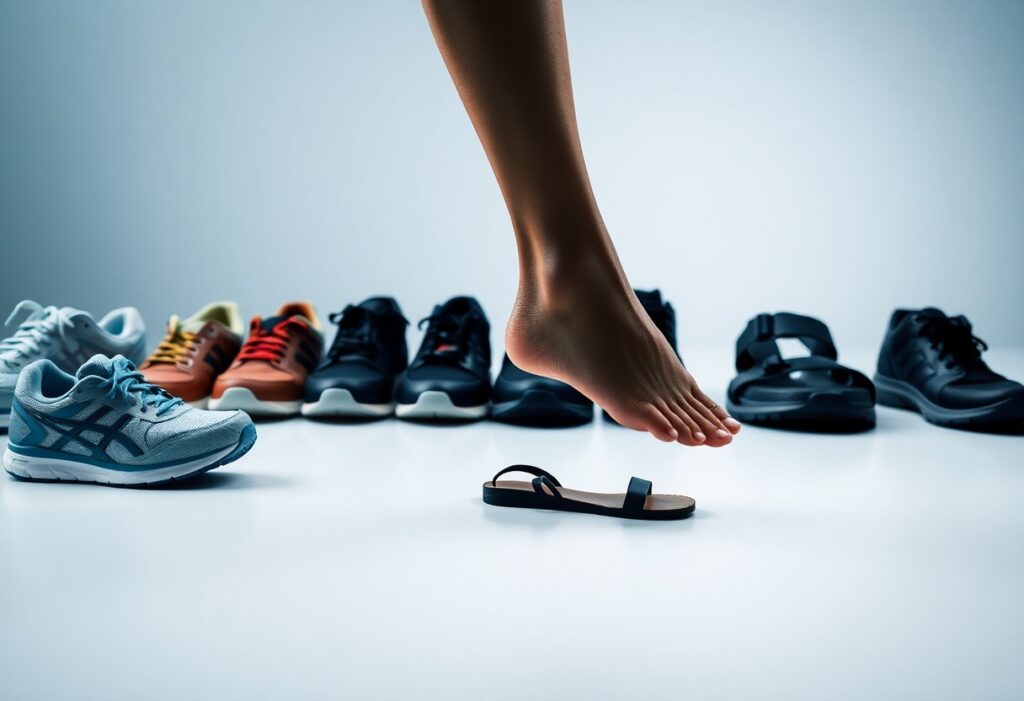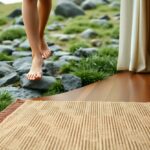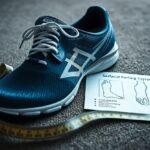
As you walk, the selection of footwear plays a critical role in determining your foot health. Many people hold the misconception that shoes designed with extra cushioning and support offer the best solutions for foot discomfort. However, conventional footwear can often do more harm than good. Dr. Alissa Kuizinas, a renowned podiatrist from Massachusetts, promotes the use of barefoot shoes or minimalistic footwear, suggesting that such options facilitate stronger, healthier feet. By choosing shoes that allow for natural foot function, you can lower the risk of developing foot issues and enhance your overall foot wellness.
Identify the Detrimental Effects of Traditional Footwear on Your Foot Health
Although traditional shoes might provide temporary relief from foot pain, they frequently worsen existing conditions and lead to new complications, as noted by Dr. Alissa Kuizinas. She indicates that the $133 billion shoe industry often prioritizes aesthetics and profit margins over authentic foot health, resulting in shoe designs that can constrict and weaken your feet over time. This reliance on conventional footwear can create a harmful cycle, ultimately jeopardizing your foot health and leading to long-lasting issues.
Analyzing the Shoe Industry’s Ineffective Solutions for Foot Health
The core of this issue lies in the flawed approach taken by the shoe industry, focusing on the addition of excessive cushioning, support, and rigid construction without tackling the fundamental causes of discomfort. Such a strategy fosters a reliance on shoes that may genuinely compromise your foot health over time, resulting in various complications that could have been avoided with more thoughtful design principles.
Identifying the Design Deficiencies of Conventional Footwear
Numerous traditional shoe designs feature narrow toe boxes, stiff soles, and excessive cushioning that can hinder natural foot movement, leading to weakened and dysfunctional feet. Dr. Kuizinas stresses that footwear should protect your feet from external elements rather than restrict their natural movement. An optimal shoe design should prioritize natural foot function and include minimalist features, such as wider toe boxes, flexible and flat soles, and limited cushioning to foster better foot health.
By embracing barefoot shoes or minimalistic footwear, you can effectively fortify your feet and enhance your overall foot well-being. Dr. Kuizinas advocates for using the least amount of shoe necessary, allowing your feet to function naturally and move freely, which is crucial for maintaining excellent foot mechanics.
Grasping the Significance of Natural Foot Movement
Footwear that restricts your foot’s natural movement can lead to a variety of foot problems and discomfort. It’s essential to evaluate how your shoe choices impact your overall foot health and comfort levels to make well-informed footwear decisions.
Assessing the Influence of Footwear on Foot Mobility
To truly understand the effects of shoes on your foot’s mobility, it’s critical to analyze the specific designs and features of your chosen footwear. Traditional shoes often come equipped with cushioning and support elements that can inadvertently restrict your foot’s natural movement, resulting in weak and dysfunctional feet over time. This limitation can hinder your feet’s ability to develop the necessary strength and flexibility they need to thrive.
Understanding the Advantages of Promoting Natural Foot Mobility
The benefits of allowing your feet to move freely are extensive, as strong feet are essential for overall foot health. By opting for minimalistic shoes or barefoot footwear, you empower your feet to function as they were intended, fostering strength and resilience.
Movement is crucial for developing strong feet. When restricted by conventional footwear, you risk encountering various foot issues and discomfort. On the other hand, embracing minimalistic shoes or barefoot options can significantly contribute to your foot health by promoting natural movement and strengthening. By making informed footwear choices, you can lower your risk of developing foot problems and enhance your overall foot wellness.
Exploring the Concept of Functional Footwear for Optimal Health
Grasping the essence of functional footwear is crucial, as these shoes prioritize both foot health and natural movement. Functional shoes are specifically designed to allow your feet to operate as intended, negating the need for excessive support or confinement.
Defining Functional Footwear and Its Essential Characteristics
Through extensive research and experimentation with various shoe styles, you’ll discover that functional footwear possesses distinct features, including a wide toe box, flat and flexible soles, as well as minimal cushioning and support. These attributes enable your feet to move freely and naturally, promoting stronger and more capable foot mechanics.
Discovering the Benefits of Functional Footwear for Enhanced Foot Health
Wearing functional shoes provides numerous advantages, such as increased foot strength, a decreased risk of injury, and improved overall foot health. These shoes allow your feet to function as they were meant to, resulting in stronger feet and enhanced balance during daily activities.
Functionally designed footwear is intended to support your feet without imposing unnecessary restrictions, allowing them to move and flex naturally. This design philosophy fosters optimal foot health and minimizes the likelihood of developing foot ailments. By selecting functional shoes like barefoot shoes or minimalistic options, you actively promote healthy foot function while reducing the risk of foot pain and injury. Transitioning to functional footwear might require a gradual adjustment, but the long-term benefits for your foot health are priceless.
Key Features to Prioritize in Functional Footwear
To achieve optimal foot health, it is vital to seek shoes that exhibit specific features. Essential attributes to consider include:
- Wide toe box
- Flat and flexible soles
- Minimal cushioning and support
Being attentive to these characteristics will greatly aid you in choosing shoes that foster healthy foot function and support.
Comprehending the Importance of Wide Toe Boxes and Flexible Soles
A critical feature of functional footwear is a wide toe box, which allows your toes to spread naturally. This design helps prevent toe jamming and other discomfort-related issues that could lead to chronic foot pain and complications.
Understanding the Significance of Minimal Cushioning and Support
In addition to a wide toe box, functional shoes should also have minimal cushioning and support. This design element allows your feet to move naturally while strengthening foot muscles, thereby lowering the risk of foot issues.
It is essential to emphasize that minimalistic footwear, such as barefoot shoes, can significantly improve your foot health by enabling your feet to function freely. By selecting shoes with minimal cushioning and support, you can enhance muscle strength in your feet and reduce the chances of injuries. This strategic choice not only boosts your overall foot health but also decreases the likelihood of experiencing chronic pain. Therefore, prioritizing footwear that allows your feet to move naturally without excessive cushioning or support is vital.
Implementing a Step-by-Step Transition to Functional Footwear
Having recognized the importance of functional footwear, it’s time to begin your transition. Contrary to the prevalent belief that increased cushioning and support equate to greater comfort, you should aim for minimalistic shoes or barefoot shoes that facilitate your feet’s natural functioning.
Practical Tips for a Seamless Transition to Functional Footwear
Despite any initial reservations, start incorporating functional shoes into your daily routine by adhering to these practical suggestions:
- Start with short walks and gradually increase your distance
- Select shoes with a wide toe box and flat soles
- Choose minimal cushioning and support
The key is to provide your feet ample time to adjust to the new shoes while simultaneously strengthening the muscles in your feet.
Recognizing the Importance of Patience Throughout Your Transition
Transitioning to functional footwear necessitates patience and a gradual approach. Shoes that are overly minimal can lead to discomfort and pain if your feet are not accustomed to them. Taking a slow and steady approach is crucial, allowing your feet to acclimate to the new footwear.
Footwear options like barefoot shoes or minimalistic shoes can be highly beneficial for your foot health, but it’s critical to introduce them gradually. Overuse or improper sizing can lead to injuries or ongoing discomfort. The ultimate objective is to build strength in your foot muscles while enhancing your overall foot health, so patience is key, and rushing through the transition is inadvisable. The rewards will be substantial; expect improved balance, diminished pain, and stronger feet.
Establishing Strong and Functional Feet Through Thoughtful Footwear Choices
Even in a world where shoes with excessive cushioning and support dominate the market, you can cultivate strong and functional feet by making informed footwear selections.
Investigating the Connection Between Foot Strength and Overall Health
Alongside various health factors, foot strength is a significant contributor to your overall well-being, influencing your balance, posture, and movement capabilities.
How Functional Footwear Facilitates the Development of Strong Feet
Functionally designed shoes characterized by a wide toe box, flat and flexible soles, and minimal cushioning are essential for nurturing strong feet, as they enable natural movement.
Indeed, wearing functional shoes or barefoot shoes can greatly aid in building stronger foot muscles and enhancing your overall foot health. By allowing your feet the freedom to move and function naturally, you can reduce the risk of foot problems while maximizing your balance and stability. As you transition to minimalistic shoes, you should expect to see improvements in your walking technique and overall sense of well-being.
By taking proactive measures to manage your foot health, you can select shoes that support your feet’s natural functions rather than hinder them. Choosing barefoot shoes or minimalistic options that allow your feet to operate freely will promote strength and stability over time. Start your journey by seeking footwear with a wide toe box, flat and flexible soles, and minimal cushioning and support, while being patient as you transition to a more natural walking style.
The Article A Podiatrist’s Guide to How Shoes Affect Your Foot Health appeared first on My Shoes Finder
The Article How Shoes Impact Your Foot Health: A Podiatrist’s Insights Was Found On https://limitsofstrategy.com
The Article Shoes and Foot Health: Insights from a Podiatrist First Appeared ON
: https://ad4sc.com







